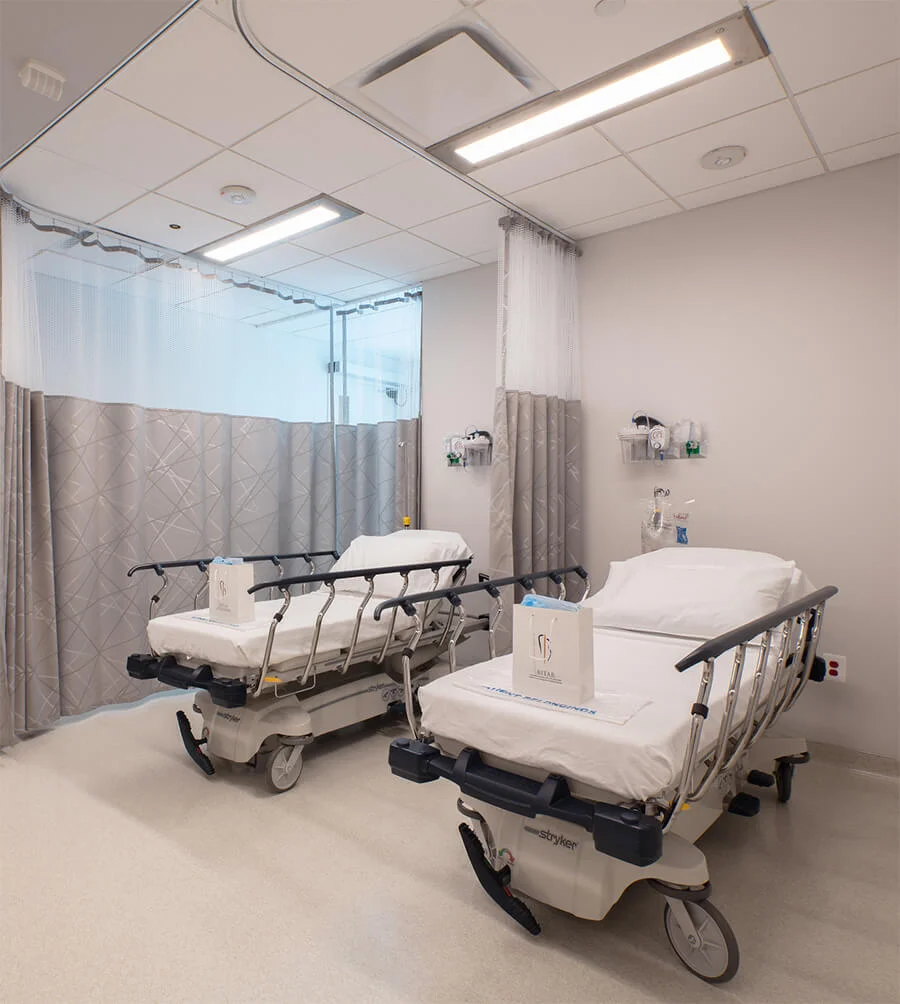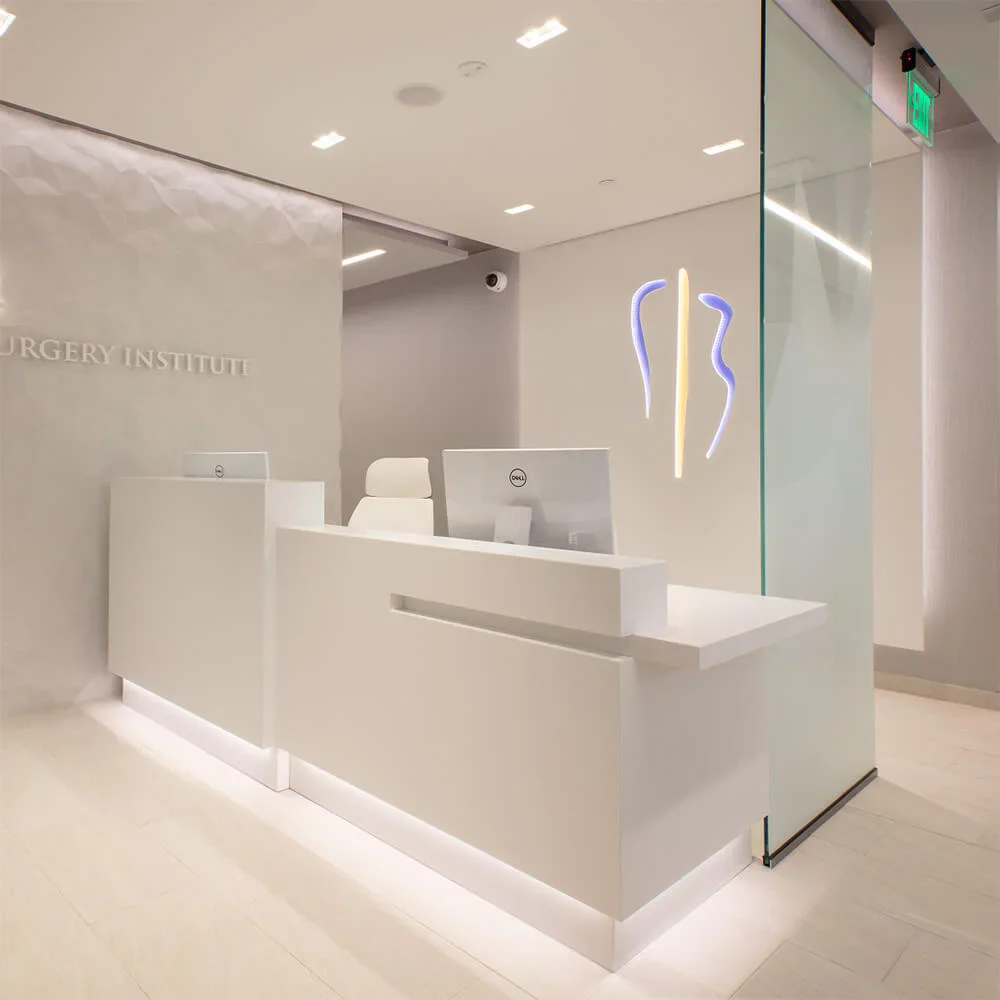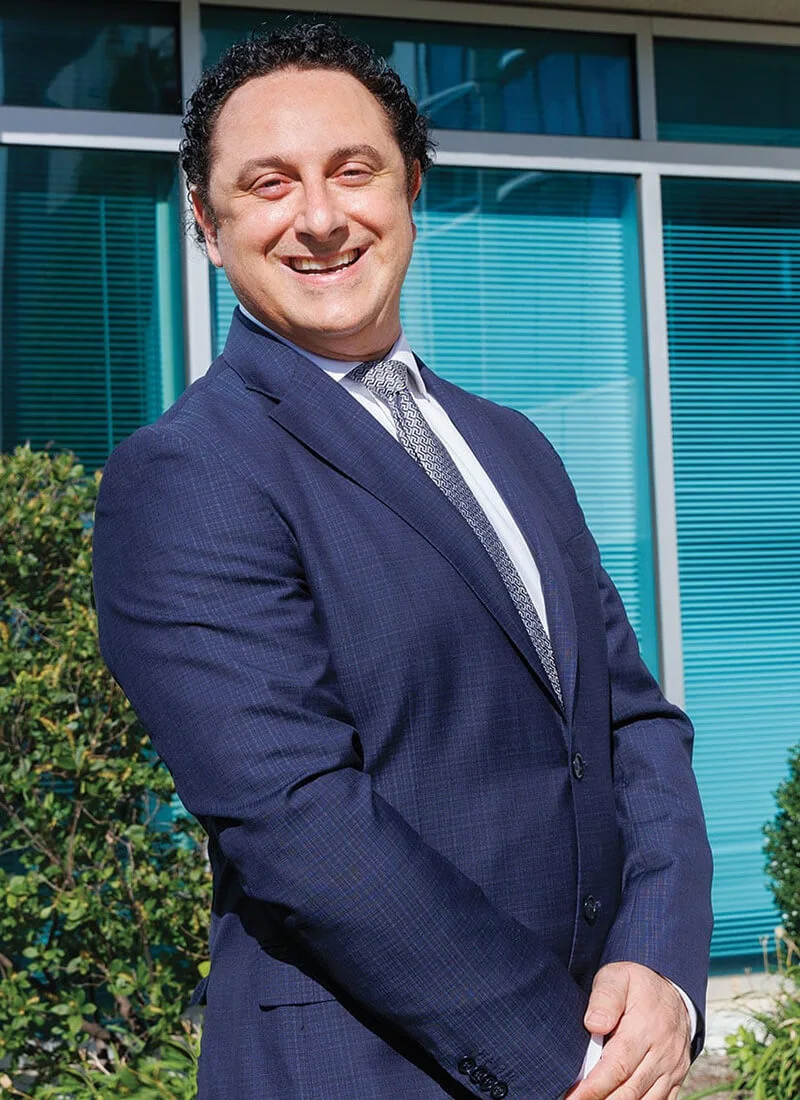Your face is one of your most prized features—it reflects how you feel inside to the world. Many of our patients feel youthful on the inside, but their facial appearance doesn’t reflect that. Facial aging affects the skin, muscles, and fat; to truly rejuvenate the face, all these layers must be addressed. A facelift performed by an experienced plastic surgeon, especially one skilled in deep-plane facelifts, can effectively achieve this.
Dr. George Bitar, in Fairfax, VA, and providing excellent service to patients as far as Washington, D.C. and beyond, is an expert in deep plane facelift surgery, having trained with the world’s top facelift surgeons and lectured to facelift surgeons from around the globe. He recently performed a deep plane facelift in Brazil, in front of an audience of facelift surgeons watching in the operating room, showcasing his cutting-edge techniques.
Pain Level After Surgery
Moderate
Anesthesia
General
Duration of Surgery
4-5 Hours
Scars
Carefully hidden around the ears, into the hairline, and under the chin
Final Results
12 months You will look socially presentable in about a month
Return to Regular Work
3-4 Weeks
Resume Exercise
4-6 Weeks
Price Range
Call for Pricing

A deep plane facelift is a more advanced facelift technique that requires excellent knowledge of facial anatomy and surgical versatility, which comes with the experience of having performed thousands of facelifts. This technique targets the deeper tissues of the face for more comprehensive and long-lasting results, which can last up to twenty years. This advanced technique enables a natural, youthful appearance without a “done” look, attracting younger patients in their forties.
Many of our patients in their forties, fifties, and even eighties choose facelifts with Dr. Bitar whether as a first-time procedure, or to enhance a prior facelift done elsewhere that did not yield the desired results, to rejuvenate their appearance for a variety of reasons, whether it’s to feel more confident, compete in the workplace, or simply to enjoy a refreshed look.
When patients in the greater Washington, D.C., Metropolitan area are unhappy with their appearance, it can sometimes be challenging to pinpoint exactly why. Here are a few common concerns and the solutions we offer:
Excess fat in the neck but good skin and muscle tone: Neck lipsuction is recommended (May be performed under local or general anesthesia).
Excess fat in the neck with loose skin and muscle: A neck lift may be appropriate (May be performed under general anesthesia).
Laxity in the neck, jowls, and jawline: A mini facelift may be the solution. (May be performed under general anesthesia).
Laxity in the neck, jowls, and cheeks: A deep plane facelift or traditional facelift is the best option for comprehensive rejuvenation (May be performed under general anesthesia).
Droopy eyebrows and forehead wrinkles: A forehead lift will provide the desired results (May be performed under general anesthesia).
Dr. Bitar’s expertise in deep plane facelifts offers significant advantages for patients looking for profound facial rejuvenation:
In this video, Dr. George Bitar discusses one of today’s most advanced facial rejuvenation procedures: the Deep Plane Facelift. With over 20,000 cosmetic procedures performed, Dr. Bitar has become a go-to expert for patients seeking sophisticated, subtle rejuvenation without the “overdone” look.
The first step toward your deep plane facelift journey in the Washington, D.C area begins with a comprehensive consultation at our Fairfax, VA practice. Dr. Bitar will evaluate your facial anatomy, skin quality, and overall health to determine if the deep plane technique is the best fit for your needs. This personalized assessment includes a detailed review of your medical history, a discussion of your aesthetic goals, and an explanation of what to expect during and after surgery. You will also learn about alternative options if the deep plane facelift is not the ideal choice. During this initial visit, you can ask questions, view before-and-after photos of previous patients, and start building a relationship with Dr. Bitar and his expert team.
Ideal candidates for a deep plane facelift in the greater Washington, D.C., Metropolitan area are individuals who want a natural-looking, long-lasting facial rejuvenation that addresses sagging in the mid-face, jowls, and neck. Typically, patients are in their 40s to 70s who have noticeable skin laxity, muscle descent, or volume loss that cannot be fully corrected with less invasive treatments. Good candidates are generally in good health, non-smokers (or willing to quit prior to and after surgery), and have realistic expectations about the outcomes. Because this technique repositions deeper facial tissues, it’s especially suited for patients seeking a subtle but profound refresh without the overly tightened or “pulled” appearance associated with traditional facelifts. Dr. Bitar also recommends this approach for individuals who wish to enhance or revise a previous facelift that did not yield lasting results.
During your initial consultation, Dr. Bitar will assess your candidacy for the deep plane facelift or another facelift technique.
Patients often find reassurance in speaking with others who have had the same procedure, and we will provide an opportunity for you to connect with previous facelift patients. Regular post-operative check-ins ensure you are healing properly, and you are welcome to follow up with us, even years after your surgery.
Dr. Bitar’s facelift technique, including the deep plane facelift, focuses on comprehensive rejuvenation of the cheeks, jowls, and neck. After administering a tumescent solution to minimize bleeding, excess fat is removed either by direct excision or, if necessary, via liposuction.
The skin is then carefully elevated, and the deeper supporting tissues (SMAS layer) are tightened to lift the cheeks and jowls, as well as the neck, restoring youthful contours to the face. In some cases, Dr. Bitar may also perform his signature suture suspension necklift technique in conjunction with the deep plane facelift to further enhance the neck and jaw contour.
In a deep plane facelift, Dr. Bitar repositions the deeper facial tissues to achieve more profound and longer-lasting results, particularly in the mid-face area, which standard facelifts may not fully address. After tightening the muscles and removing any excess skin, incisions are carefully concealed in natural folds around the ears and hairline.
Fat transfer to the mid-face can also be combined with the procedure to restore lost volume, resulting in a fully refreshed appearance. Upper and lower eyelid lifts, forehead lifts, rhinoplasty, and chin implants are ancillary procedures that Dr. Bitar often performs in conjunction with a facelift to achieve remarkably youthful results.

Following your facelift, you will receive a detailed recovery plan. We encourage patients to eat a high-protein diet to aid healing and refrain from smoking for a minimum of two weeks after surgery.
You will also be seen for regular post-operative visits, starting the day after surgery, and we are available 24/7 for any questions.
Dr. Bitar is dedicated to ensuring the best possible outcome for every patient and will closely monitor your progress. We see all our patients the day after surgery, a week later, a month later, six months later, and a year later to ensure they heal well and achieve excellent results.
At our practice, we’re proud to be one of the few in the area offering Elixir MD, a cutting-edge LED-based device specifically designed to accelerate healing after cosmetic surgery. Elixir MD stimulates cellular repair, reduces inflammation, and enhances circulation, dramatically shortening recovery time and improving surgical outcomes. This advanced technology sets our practice apart, offering patients a faster, more comfortable healing experience with visibly better results.

At the Bitar Cosmetic Surgery Institute, we take pride in providing our patients with the best possible surgical experience, emphasizing patient safety while striving to optimize surgical results. This process includes comprehensive pre-operative preparation and patient education, the development of a personalized operative plan, and a thoughtful post-operative care regimen that emphasizes patient comfort and promotes recovery.
The Institute has adopted several strategies to further ensure patient safety. We are selective and only offer surgery to patients whose overall health and lifestyle choices allow for healing and facilitate recovery. To minimize risk, we require a comprehensive preoperative assessment that includes a thorough history and physical examination, as well as targeted laboratory tests.
All surgeries are performed in-house at our AAAASF-accredited surgical suite, representing the gold standard in patient safety and care. This certification ensures we meet the highest standards, with board-certified anesthesiologists and nurses on-site, adhering to strict protocols to minimize risks and optimize outcomes. Dr. Bitar is committed to continuing education, refining his skills, and introducing new techniques, all with the goal of enhancing safety and surgical outcomes.
We emphasize patient safety in our peri-operative care plan, advocating early mobilization, optimizing nutrition, and providing detailed care instructions. After surgery, patients are seen in our office frequently and early, starting the day after their procedure, and a staff member is available around the clock for any questions or concerns. Our entire team is dedicated to our patients’ well-being, and every measure is designed to minimize potential complications, promote a comfortable and rapid recovery, and optimize surgical outcomes.

Our commitment to excellence and exceptional patient care is in every step of your doctor-patient experience. Dr. George Bitar is a distinguished board-certified plastic surgeon who stays on the cutting edge of advancements in cosmetic surgery and technology to offer the best possible results.
Dr. Bitar’s expertise in deep-plane facelifts and other advanced facial procedures ensures that patients receive the most natural, long-lasting results possible. Our comprehensive care, personalized treatment plans, and dedication to patient safety make us a top choice for facial rejuvenation. Whether you’re considering a facelift, injectables, or other treatments, we’re here to help you achieve your aesthetic goals with the highest level of care. Bitar welcomes patients globally and locally from Northern Virginia, including Fairfax, Vienna, Alexandria, Washington D.C., and Maryland, as well as locations near you.
For more information, call our office at 703-206-0506.
The cost of a Deep Plane Facelift in Fairfax and the greater Washington, D.C. area can vary depending on the complexity of the procedure and any adjunctive treatments performed simultaneously, such as fat transfer or eyelid surgery. At Bitar Cosmetic Surgery Institute, the fee reflects Dr. Bitar’s extensive experience, the use of an AAAASF-accredited surgical facility, and the highest standards of anesthesia and post-operative care. While some locations in major metropolitan areas may charge more, Dr. Bitar offers exceptional value by combining world-class expertise with personalized care and safety protocols. A customized cost estimate will be provided during your consultation to ensure transparency and allow you to plan accordingly.
When considering a deep plane facelift, it’s essential to weigh both cost and expertise. In major cities like New York and Beverly Hills, these procedures can exceed $100,000, especially when combined with other treatments.
However, traveling for your deep plane facelift might offer significant advantages. At the Bitar Institute, our on-site surgical center (which holds prestigious AAAASF accreditation) and location outside major metropolitan areas allow us to provide competitive pricing without compromising expertise. We also prioritize your safety and comfort by working with a board-certified anesthesiologist.
Dr. Bitar is a recognized expert in the deep plane facelift, having been invited to teach this advanced technique in Brazil and at a prestigious Master Facelift course in New York City. His commitment to excellence ensures exceptional results and a high-end patient experience.
If finding the most skilled surgeon is your priority, the Bitar Institute offers both unparalleled expertise and potentially significant cost savings, making travel for your procedure worthwhile. Learn more about travel for our out-of-town patients.
If you would like further information about this procedure, please do not hesitate to contact our office to schedule an appointment by calling (703) 206-0506 or completing an online request form.

Never miss out on the latest offerings, transformations, and behind-the-scenes at Bitar Cosmetic Surgery Institute.
“Natural beauty but doing a little somethin’ somethin’ to make beautiful features pop is what the Model Lift™ accomplishes.”
–
Dr. George Bitar
Follow Us On Social Media